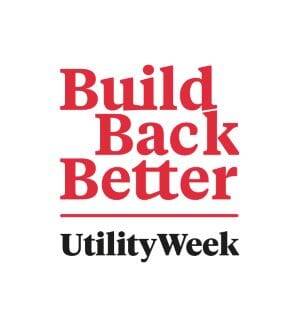You’ve reached your limit!
To continue enjoying Utility Week Innovate, brought to you in association with Utility Week Live or gain unlimited Utility Week site access choose the option that applies to you below:
Register to access Utility Week Innovate
- Get the latest insight on frontline business challenges
- Receive specialist sector newsletters to keep you informed
- Access our Utility Week Innovate content for free
- Join us in bringing collaborative innovation to life at Utility Week Live

While the challenges of decarbonising heat are well known, a clear plan to achieve it is yet to emerge. The case for public private partnerships with local authorities has never been stronger says Jody Pittaway sector director for SSE Enterprise Heat
 For SSE, our core group purpose is clear: to provide the energy needed today whilst building a better world of energy for tomorrow. Our recent ‘Greenprint’ set out just how we want to do that in tandem with UK government to help rebuild the economy and power us along the road to net zero.
For SSE, our core group purpose is clear: to provide the energy needed today whilst building a better world of energy for tomorrow. Our recent ‘Greenprint’ set out just how we want to do that in tandem with UK government to help rebuild the economy and power us along the road to net zero.
Decarbonisation of heat has a big role to play in this ambition. The Committee on Climate Change has identified that in order to achieve the UK’s 2050 net zero carbon targets, around 18 per cent of heat will need to come from heat networks. Its latest Progress Report was crystal clear: we are not moving far enough fast enough, and a stronger cross-government strategy is urgently needed.
But whilst the challenges of decarbonising heat are well known, a clear plan to achieve it is yet to emerge. The vast majority (85 per cent) of homes are still heated by natural gas and of those, two thirds suffer from inefficient heating systems. This makes conversion to low carbon solutions harder.
Adding to this, public awareness of the need to decarbonise heat is worryingly low, with only 10 per cent of gas boiler customers willing to switch to greener alternatives. Decarbonising heat requires us to enter people’s homes and engage with customers in a way that hasn’t been needed for electricity grid decarbonisation. If we’re going to get heating decarbonised, we need get the public onside.
In my business, SSE Enterprise, we already operate 16 heat networks [we also support two hospitals with their heat] across the UK which serve over 10,000 customers from bespoke on-site heating and cooling energy centres that are cleaner and cheaper than individual gas boilers.
But we need the sector to grow faster as it currently accounts for meeting just 2 per cent of heat demand in this country – far lower than other European countries.
What about solutions then?
Well, I believe that a paradigm shift is necessary toward enhanced Local Authority empowerment supported by strong national leadership. Fundamentally, we need the Government to set out its strategic vision and policy framework and enable local authorities to drive and execute strategic planning.
Heat networks are intrinsically local infrastructure and it is vital they are planned in areas where they can deliver the most benefit, for example, where there is density of heat load and sources of waste heat.
They also need to be strategically embedded within local development plans to support sustainability, fuel poverty and mobility objectives, bringing to life real ‘local integrated energy systems’, to leverage links between heat, transport and renewable generation.
For these reasons, I strongly believe that Local Area Energy Planning (LAEPs) and local heat network zoning should be part of the policy ‘armoury’ to achieve these outcomes and as such, it should be trialled and rolled-out as a top priority.
‘Heat Networks Zones’ will channel investments, delivering heat at the lowest price to consumers. Targeted policy interventions within zones should also be adopted, including granting exclusive concessions to private and public sector entities, using public sector loads to anchor the network and providing incentives (or obligations) to connect to heat networks.
But zoning, planning, development and deployment of heat networks only works if there are proper resources to support it. Too often, we see a pressure on local authority resources and a shortage of experience in delivering heat networks constraining deployment. And, of course, Covid-19 has put even more strain on already stretched resources.
The case for well-designed public private partnerships has never been stronger. Sector operators can bring the capacity and know-how to local authority projects, in a joint effort to ensure these can be planned, designed, delivered and, importantly, expanded at the necessary speed and scale to meet the net zero target.
I have witnessed, first-hand, the negative impact on heat network projects when design, commissioning and long-term asset management strategies are not fully integrated from day one: plant may be oversized, designs may be inefficient, network efficiency sub-optimal and energy consumption higher as a result. Crucially, the consumer experience is poor. Early engagement with system operators is necessary to avoid these outcomes.
So, yes, a bold, Whitehall-led approach is crucial to set the trajectory and provide the co-ordinated policy framework, but this must be combined with clear powers for local authorities to design and deploy appropriate local energy infrastructure, based on local factors.
This transformational change will require political courage and unprecedented stakeholder alignment. SSE Enterprise is ready to take up the challenge.
SSE has recently sponsored a roundtable with Carbon Connect on the required Governance for heat decarbonisation. More information is available here




Please login or Register to leave a comment.